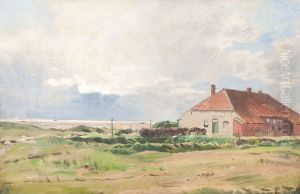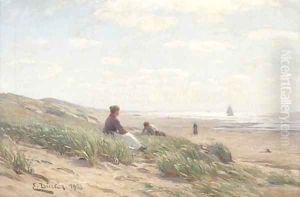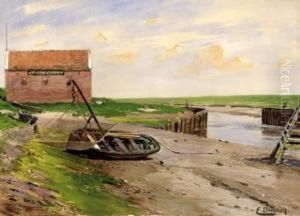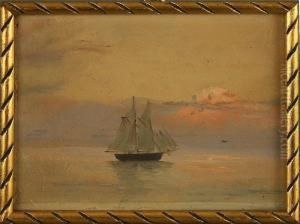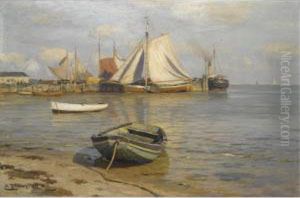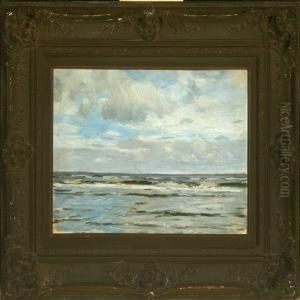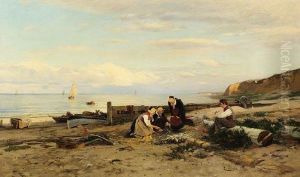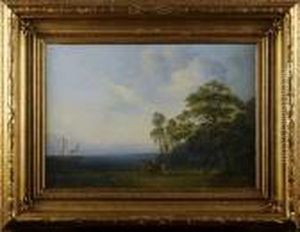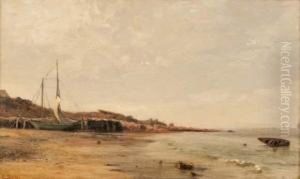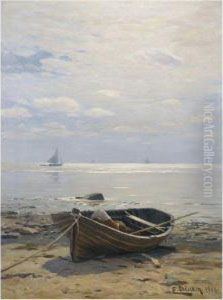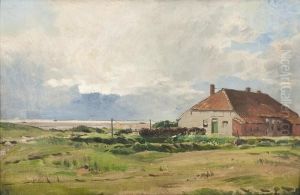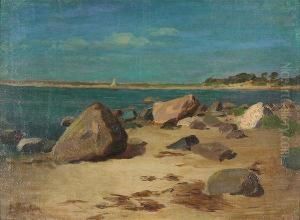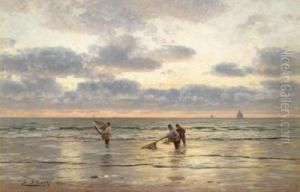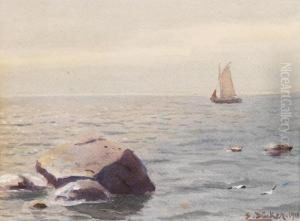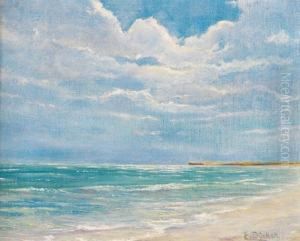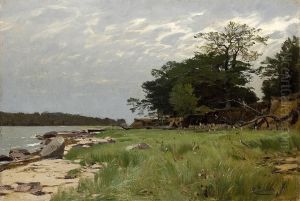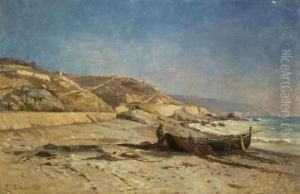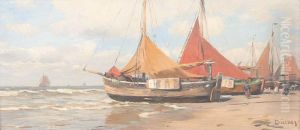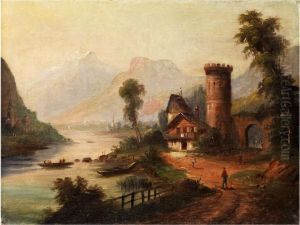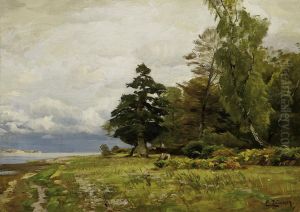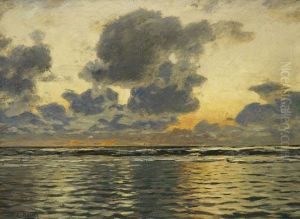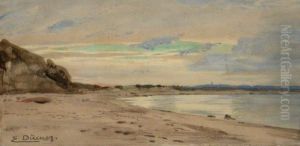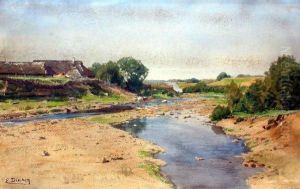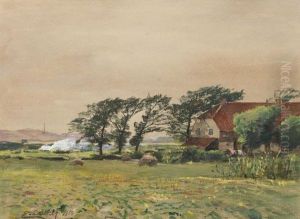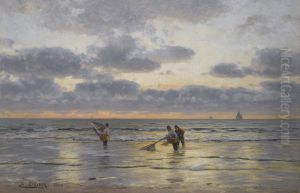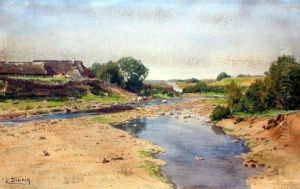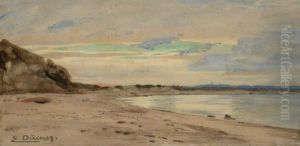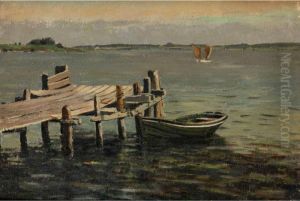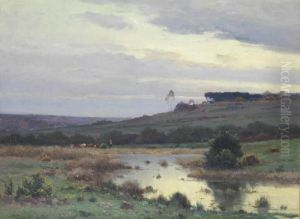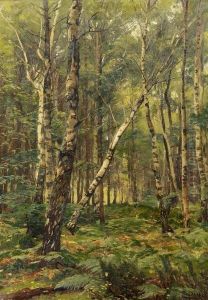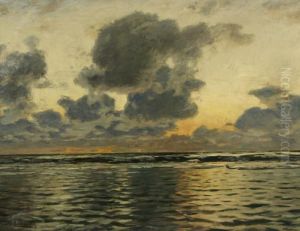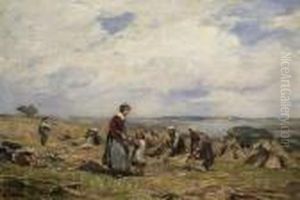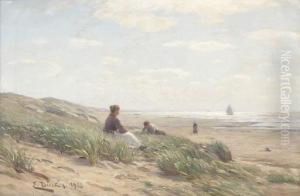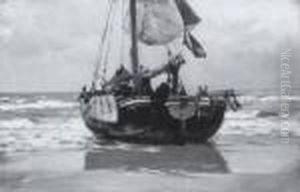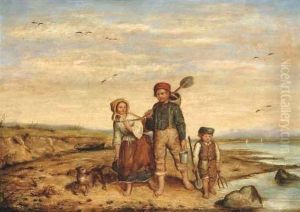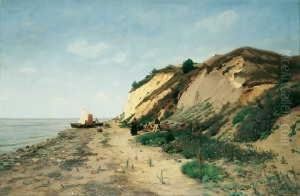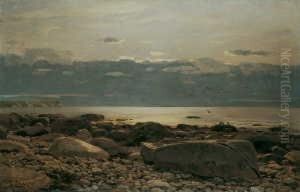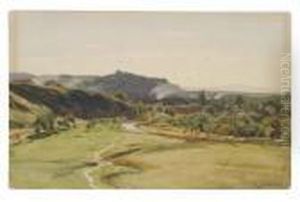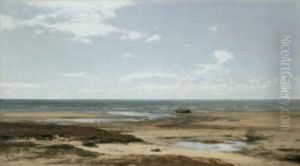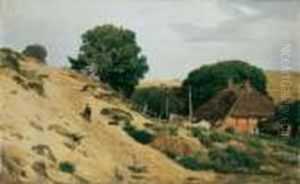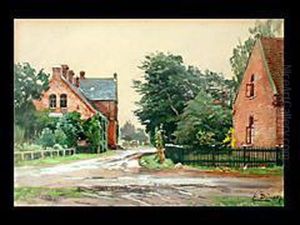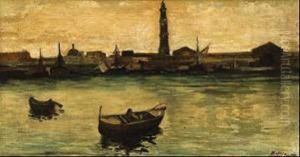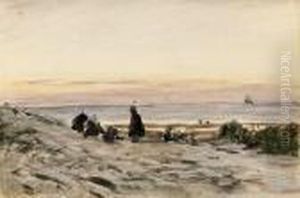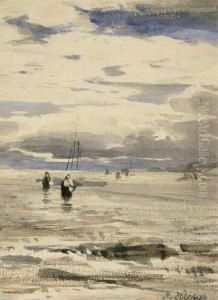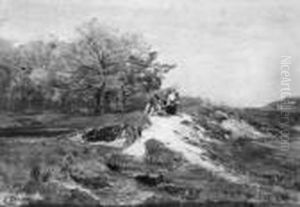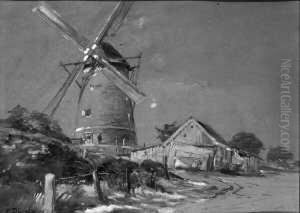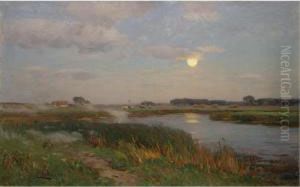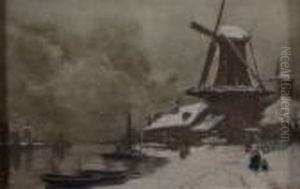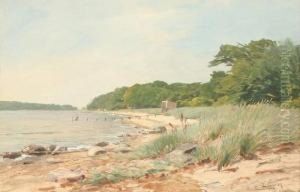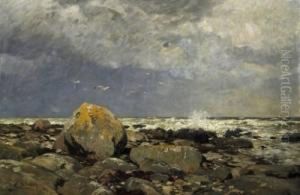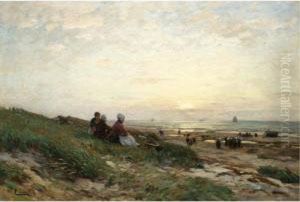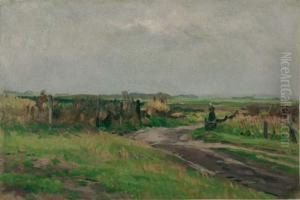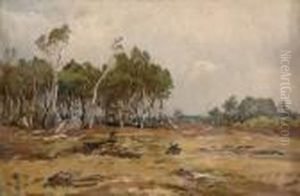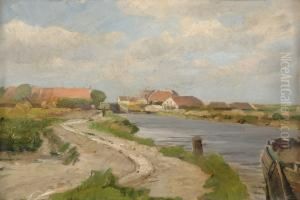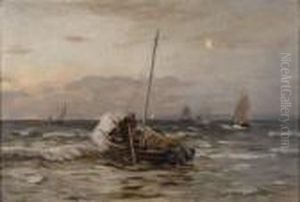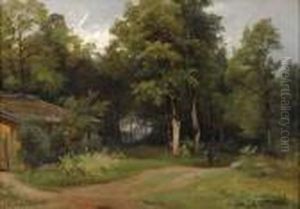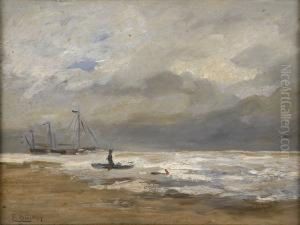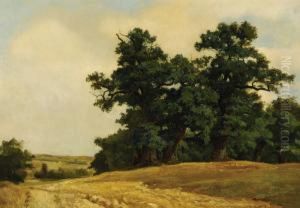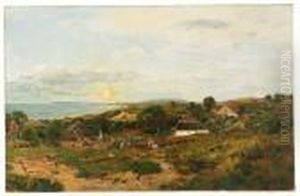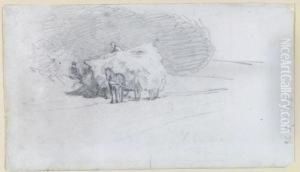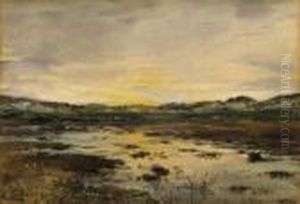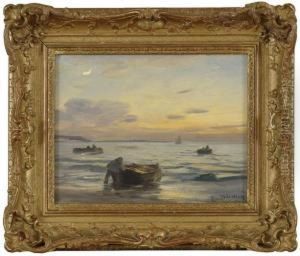Eugene Gustav Ducker Paintings
Eugene Gustav Ducker, also known as Eugen Gustav Dücker or Eugen Dücker, was a prominent Baltic German painter, associated with the Düsseldorf school of painting. Born on January 29, 1841, in Arensburg, on the island of Saaremaa in Estonia (then part of the Russian Empire), Ducker is best recognized for his contributions to landscape painting, particularly his realistic depictions of the Baltic Sea coast and its surroundings.
Ducker began his artistic education at the St. Petersburg Academy of Arts but later moved to the Düsseldorf Academy, which was a leading art institution in the 19th century, known for its influence on landscape painting. In Düsseldorf, he studied under the guidance of Oswald Achenbach, who was a significant figure in German landscape painting. Achenbach's emphasis on atmosphere and mood had a lasting impact on Ducker's work.
Throughout his career, Ducker became known for his distinctive approach to landscape painting. He developed a style characterized by meticulous detail, atmospheric effects, and an often subdued color palette. His seascapes and coastal scenes often depicted the raw, unembellished nature of the northern landscape, reflecting the character of the Baltic region with its moody skies and rugged terrain.
Ducker gained recognition in Germany and abroad, becoming a member of the Imperial Academy of Arts in St. Petersburg and receiving various awards and honors for his work. He also took on a role as an educator, teaching at the Düsseldorf Academy, where he influenced a generation of landscape painters. His teaching and his art left a lasting legacy on the Düsseldorf school and the development of landscape painting in the late 19th and early 20th centuries.
Eugen Ducker's works can be found in various art collections and museums throughout Europe. He continued to paint and teach until his death on December 6, 1916, in Düsseldorf, where he had spent much of his professional life. Ducker’s attention to the interplay of light and atmosphere in his landscapes has been appreciated by art historians and collectors alike, securing his place as a significant artist in the Baltic and German art history.
